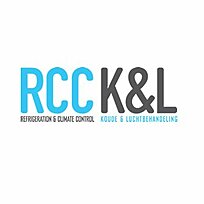
Economies d'énergie du côté haute pression.
Energiebesparing aan de hogedrukzijde.
Auteurs : ROTH P.
Type d'article : Article
Résumé
The condensing temperature has a significant influence on the efficiency of a refrigerating plant. The lower the technically achievable condensing temperature, the lower the required operating energy input for compression, resulting automatically in lower operating costs for the refrigerating plant. Several different measures can be taken to decrease the condensing temperature. The area of the heat exchanger surface and the type and control of the condenser fans have the greatest influence. In practice, many refrigerating plants are still operated with unnecessarily high condensing temperatures, because the interrelation between the expansion valve selection and the condensing temperature is not calculated in detail so that values with fairly high tolerances need to be set for security reasons. Accurate calculations can now be done easily with the new TEV module integrated in the Güntner design software GPC. The correct condenser fan selection also helps to save energy. The energy efficiency classification of the condenser as stated in the catalogues is a useful indicator for heat exchanger selection. The environmental benefit is derived from the selection of highly efficient condensers not only due to savings in energy and operating costs, but also due to the related reduction in noise emissions.
Détails
- Titre original : Energiebesparing aan de hogedrukzijde.
- Identifiant de la fiche : 2008-2074
- Langues : Néerlandais
- Source : Koude & Luchtbehandeling - vol. 101 - n. 2
- Date d'édition : 02/2008
Liens
Voir d'autres articles du même numéro (1)
Voir la source
-
L'énigme de l'évaporateur enfoncé.
- Auteurs : CHRISTIAEN P., ALDER G.
- Date : 04/2009
- Langues : Français
- Source : Cool Comf. - vol. 11 - n. 41
Voir la fiche
-
Energy conservation in industrial refrigeration...
- Auteurs : BRILEY G. C.
- Date : 06/2003
- Langues : Anglais
- Source : ASHRAE Journal - vol. 45 - n. 6
Voir la fiche
-
Les réservoirs dans les installations frigorifi...
- Auteurs : NOVICHKOVA J. A.
- Date : 2002
- Langues : Russe
- Source : Holodil'nyj Biznes - n. 4
Voir la fiche
-
Recherches sur le transfert de chaleur lors de ...
- Auteurs : CHENG Y. K., CHANG L., ZHANG L., et al.
- Date : 08/2006
- Langues : Chinois
- Source : Journal of Refrigeration - vol. 27 - n. 4 (110)
- Formats : PDF
Voir la fiche
-
Intercambiadores de calor de aire para ciclos f...
- Auteurs : LOZZA G., PERFETTI C.
- Date : 01/2005
- Langues : Espagnol
- Source : Frío Calor Aire acondicionado - vol. 33 - n. 366
- Formats : PDF
Voir la fiche
